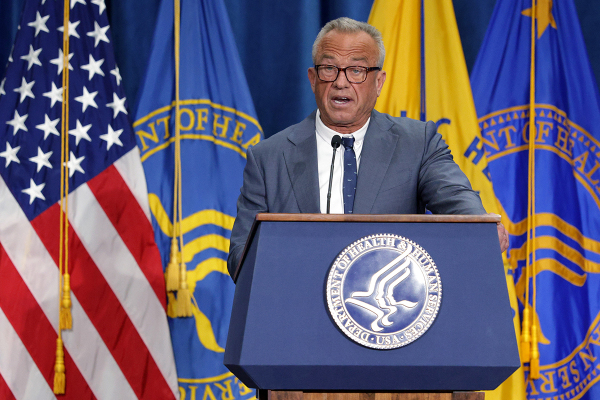Affirmative Action May Not Be the Problem; Do Colleges Prefer Rich Students?
The current Supreme Court debate over whether to continue over 50 years of affirmative action policies in their current form has brought to light arguments over whether admissions policies have another bias – rich students. Though most top colleges admit students blind to need, some experts argue that the cost and limits of financial aid produces a student body that is more affluent than the national average.
There is a growing body of evidence that America's colleges and universities have a class bias that contributes to increasing income inequality. Rather than recruiting the best and brightest high school graduates, the top universities are recruiting those who are best able to pay, research suggests. Plus, the institutions that do the most to help low income students – community colleges – get fewer resources than the colleges and universities that educate middle to upper income students.
Just last month, The Century Foundation, a left-of-center think tank, released a report, "Bridging the Higher Education Divide: Strengthening Community Colleges and Restoring the American Dream," showing that 70 percent of the students enrolled at the most competitive universities are from the wealthiest families, or those in the top 25 percent in income. Only five percent of their students are from the bottom 25 percent in income, despite the fact that, as Jordan Weissmann at The Atlantic points out, 39 percent of America's best students are from families in the bottom half in terms of income.
Also, according to the report, community colleges educate twice as many low-income students as high-income students. But, states spend about $12,611, on average, for every bachelor's degree student at public 4-year schools, and only $4,209, on average, for each of their community college students.
The motivation for favoring students from wealthy families over students from poor families is obvious – they can pay more. As long as universities aim at racial diversity, rather than class diversity, they can recruit wealthy minorities that have less need for financial aid. The question then becomes, would a college be doing more to help the disadvantaged by helping a poor white student or a wealthy minority student?
Race-based affirmative action programs are typically unpopular among conservatives. Recently, though, there have been more calls from liberal elites to replace race-based affirmative action programs with programs designed to increase class diversity on college campuses. Richard D. Kahlenberg, a senior fellow for The Century Foundation and executive director of the team that assembled the organization's report, has been one of those advocates. In 1997, he authored a book, The Remedy: Class, Race, and Affirmative Action, which argued for class-based affirmative action.
In a Sunday editorial for The New York Times, Bill Keller, the paper's former executive editor, also argues that colleges and universities need an affirmative action based on class. He does not think race-based affirmative action should be done away with entirely, not yet, because he favors the positive effects of having a diverse student body. But, he does think that colleges should "shift their attention decisively away from racial preferences to an affirmative action based on class."
One of Keller's arguments is based upon the results of class-based programs implemented by a conservative. When President George W. Bush was governor of Texas, he transformed the state universities' affirmative action program. Now, the top 10 percent of each high school graduating class is guaranteed admission to a state school. This has provided more opportunities for the top students in poor neighborhoods who want to go to college.
(The 10 percent program represents most of the admissions process, the rest of the admissions is determined by other factors, including race. That race-based component is the legal question that the Supreme Court will address this month in Fisher vs. University of Texas at Austin.)
Keller notes a study showing that the greater opportunity to go to college has motivated poor students in Texas schools to try harder: "Attendance was up, college applications were up, test scores were up, enrollment in advanced courses was up."
David Leonhardt has also used his platform writing about economics and, currently, as The New York Times' Washington bureau chief, to bring attention to the class-based discrepancies at American colleges. In an op-ed written after the Court's oral arguments in the Fisher case, Leonhardt argues that colleges long ago decided they would favor affirmative action programs based upon race, rather than programs based more broadly upon disadvantage, even though college administrators frequently claim to care about other types of disadvantages besides race: "They have preferred a version of diversity focused on elites from every race."
What would, though, class-based affirmative action mean for racial diversity on campus? As Keller points out, there is value in a classroom experience in which students bring a broad range of life experiences and views to class discussions. Additionally, in a recent poll conducted by Kaplan of high school students preparing for college, 60 percent said that a racially diverse student body is "very important" or "somewhat important" to them. Would this be lost?
Keller and Leonhardt both believe that a class-based system could increase racial diversity because blacks and Latinos are represented in a higher proportion among the lower income than among the general population.
A class-based system may also receive more public support. The results of two polls published this week show that affirmative action programs are unpopular. Even strong majorities of liberals and Democrats do not favor using race as a factor for college admissions.
Another advantage, pointed out by Keller, is that colleges would likely increase their ideological diversity as well. If they admitted more students from poor and working-class neighborhoods, it would increase the number of social conservatives and religious students on campus.
"Conservatives may exaggerate the extent to which universities are bastions of left-leaning godlessness, but it is fair to say that on most campuses social conservatives, the deeply religious and the children of military families are scarcely heard. As a result, the political discourse can be glib, predictable and impoverished. Class-based diversity would oblige students of different beliefs to test and sharpen their convictions," Keller wrote.




















